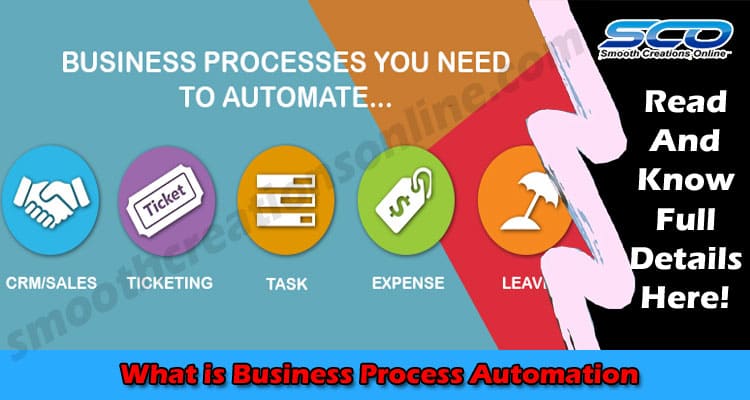What is Business Process Automation – Workflow automation is a simple, fast, and accurate technique to reach your intended goal. When should a company automate? Why does your business require process automation?
A procedure (generally repeated) for implementing a sequence of activities is typically handled manually using paper files or, at best, with spreadsheets and email.
Automation streamlines the process and reduces human mistakes by reducing human involvement. Corporate process management improves visibility, identifies bottlenecks, suggests improvements, and so increases total business efficiency.
Table of Contents
What is Business Process Automation (BPA), and how does it work?
Business Process Automation is the practice of technology to automate operations, enhancing efficiency and assisting in achieving company objectives. Processes are the acts and activities that help your company achieve its goals.
You may save operational expenses by up to 90% and shorten the time to complete tasks by automating them using software solutions.
Business Process Automation: Why Not?
You wouldn’t be here if you didn’t believe BPA might benefit you. Consider the following reasons for automating company processes:
- Technology is probably constantly transforming your firm. BPA is another means to ease into a more technology-oriented job. It’s a good step that will boost productivity. For instance, using a form builder in order to collect data is a much more productive and efficient use of time than creating a manual archive.
- Automating routine tasks relaxes your employees. They will have more time to work on challenging, intellectually stimulating initiatives that make a difference. This improves staff morale, productivity, and retention. It is intended to supplement rather than replace human resources. The technology automates repetitive tasks, allowing human resources to focus on their core competencies.
- Transparency and Management: It’s easy to get caught up in the daily grind without looking back. With BPA, you can identify, characterize, and analyze existing processes. This not only improves operations but also trains new employees.
- BPA simplifies operations and allows you to follow an activity’s progress. So critical tasks aren’t ignored.
- Automation saves time and money by reducing needless back and forth between parties. Efficiencies save money.
- Regulators touch all industries, primarily financial. Thus, digital software may help reduce risks by safeguarding past procedures. Automatic report generation and dashboard updates are possible with BPA software. Helpful data tools van gives you a real-time analytical automation platform. It may also send reports to regulators and other parties.
- Minimize human error: Data entry and management may quickly fail. Human mistakes increase with the amount of data. However, automation is supposed to reduce human error.
What are the steps to completely automate a workflow process?
- Find the process owner
This individual should be able to update existing processes. As you plan your company process, you will encounter scenarios that demand new definitions.
Do vacation days update on January 1st or joining date? If this isn’t previously recorded, the process owner should be able to explain it. Automating a process generally results in a much more defined procedure.
- Remember the ‘Why’
Remember your automation’s aim. Do you want to save time? Save? Organize better? Paperless forms? Reduce someone’s workload? Stay focused and don’t attempt to accomplish it all.
- Learn the past
For further information, talk to the process owner. Has anything changed in the previous year or two? Why? Not sure about office politics or departmental boundaries? Don’t make assumptions.
- Flowchart
At this time, don’t worry about rejections. If you plan the flow, 95% of the things will follow. Consider if you’ll require parallel processes or whether you’ll need conditional jobs.
Keep the process simple. You may always add jobs later, but a shorter process increases your chances of success. Input the data into your workflow management system.
- Consult all parties involved
Ask each task owner for specific details. Don’t overwhelm folks with information.
- Automated tests
Begin by assigning all responsibilities to yourself or the initiator. Check your conditional pathways, parallel branches, sequence numbers, and formula fields. Run numerous things of various categories to ensure it takes the desired route.
- Liven up
Initially, keep an eye on your process and ask employees to validate data access.
What Should You Automate?
It may seem like BPA is the solution to all your issues. And it will probably help you alter your company and reduce your obligations.
To successfully use BPA, you must first determine the procedures that make sense to automate.
These duties include:
- Are innately repetitive
- Many humans and moving parts
- Are time-critical
- Be sure to keep records.
- Impact other systems and processes
Time to get started!
Using various BPA tools may improve your business automation skills. These methods will allow you to automate any simple operation. As you get more adept at automating processes, you may optimize and design more complex ones.


